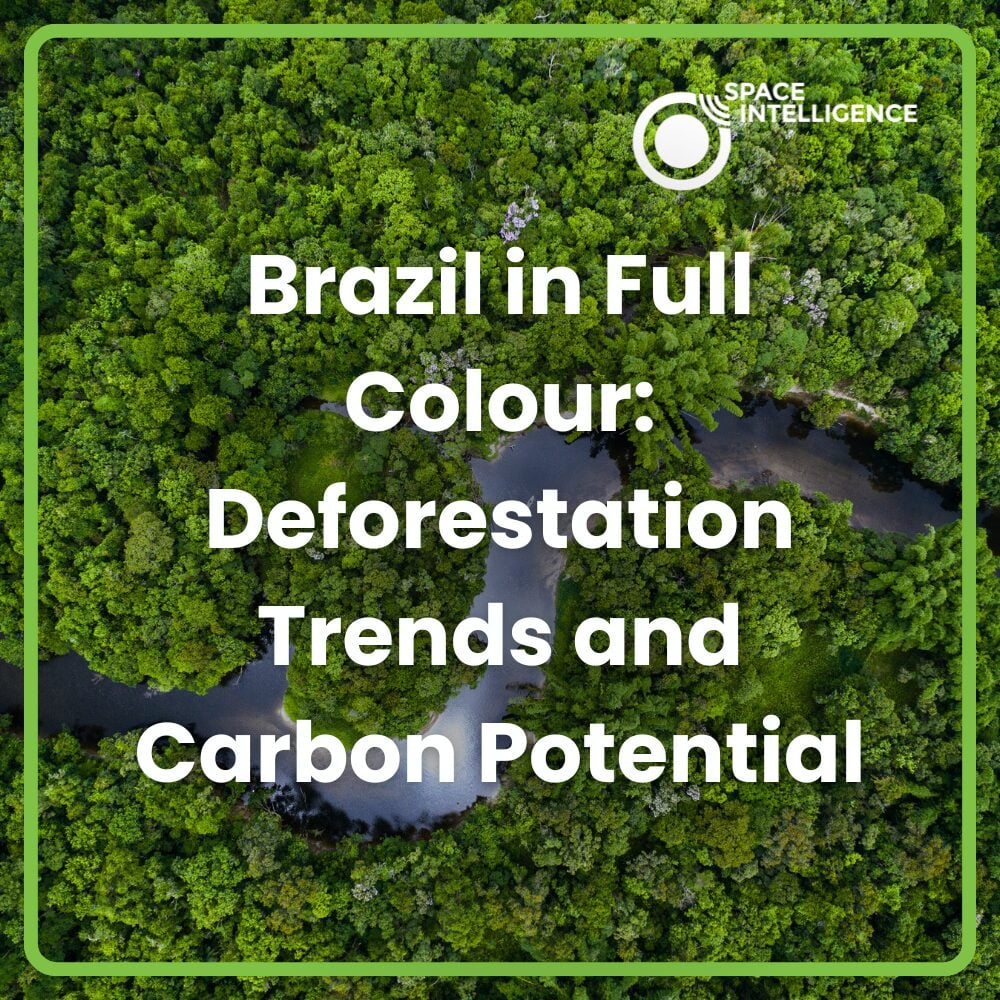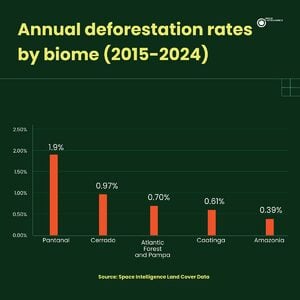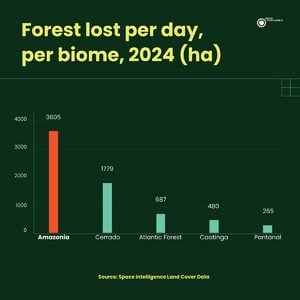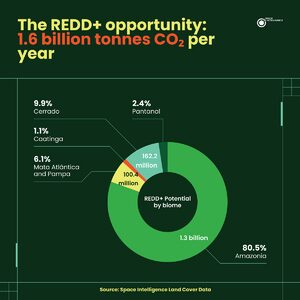
Brazil in Full Colour: Deforestation Trends and Carbon Potential
Last week, we wrapped up Brazil in Full Colour – a 5-day event exploring the carbon potential of Brazil’s biomes through a series of reports based on Space Intelligence’s audit-grade land cover data.
The reports go over land use trends from 2015 to 2024, major deforestation drivers and estimated carbon potential under restoration (ARR) or conservation (REDD+) projects. All 5 reports are available for free through this link.
Here are some key things we found.
Brazil Deforestation Rates 2015-2024

We estimated Brazil’s national deforestation rate at 0.53% per year – higher than the official MapBiomas estimate (0.43%), but still below many other tropical forest nations. Forests currently cover around 54% of Brazil’s land area.
But deforestation pressure varies sharply by biome. The Pantanal, the world’s largest tropical wetland, has the highest deforestation rate of any biome we assessed – 1.9% annually (2015-2024), much of it caused by fire, which is particularly devastating in an ecosystem that’s not supposed to burn, much less adapted to fire.
It’s followed by the Cerrado, which has lost 5.85 Mha of forest in the last decade, with the annual deforestation rate averaging 0.97%, mostly caused by large-scale agriculture and cattle ranching.
The Atlantic Forest, one of Brazil’s most degraded forests, continues to lose forest at an alarming rate – 0.7%. Despite the deforestation rate slowing down in recent years, it’s still significant, considering less than 10% of the original Atlantic Forest remains.

The Amazon has the lowest annual deforestation rate among biomes – 0.39%, but it still loses the most forest in absolute terms. From 2015 to 2024, it has lost 11.8 Mha of forest, and this loss continues at a rate of 3,605 ha/day which is equivalent to roughly ~2,000 trees/min (at 800 trees/ha).
Brazil’s Forest Carbon Opportunity
There’s a massive opportunity for both restoring degraded forests and protecting what remains. We estimated the carbon storage of existing and restored forest areas using a combination of forest carbon plots and carbon stock maps over the region. For REDD+ the emissions reductions potential were based on what carbon would be saved if deforestation stopped, based on the average deforestation rate for the past 10 years.
For ARR, we estimated the maximum land available for restoration, made assumptions about maximum nursery capacity, and used growth rates from existing restoration projects in Brazil, to estimate an upper limit of ARR capacity by 2030.


According to our estimations, Brazil has a 1.6 billion tCO2 annual potential in REDD+ projects, 80% of which is concentrated in the Amazon, which is followed by the Atlantic Forest and the Cerrado. ARR presents 62.6 million tonne annual potential by 2030, with the Amazon and Cerrado being the most promising biomes for impact.
What’s Next?
The potential for nature-based solutions across Brazil is enormous both for forest protection and restoration. With pre-processed land cover data available across the country, Space Intelligence is ready to support project developers, and investors in identifying high-integrity opportunities for impact, and assessing and monitoring that impact.
Get in touch to learn how we can support your next REDD+ or ARR project.
Tag:ARR, brazil, brazil in full colour, deforestation, REDD

